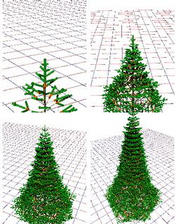
[樹齢 14, 24, 34, 44 年]
どうもいまいちすかすか感があるような気もする.
とくに若いところで.
まあ,
あれこれとやりなおしてるうちに,
こういうやつもできるわけで
……
自己不信すぱいらるに落ちそうなときは
ぱいぷ樹木
ペイジなどみて,
「以前はもっともっとヒサンだったよな」
などというあたりに救済をさがしてみたり.

/usr/local/bin/ezmlm/ezmlm-make -fgux /home/hihihi/ml /home/hihihi/.qmail-ml ml ecology.hokudai.ac.jp
とかなんとか.
chmod 777
するところ.